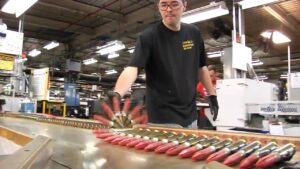
The Army’s review of its $16 billion ammunition production modernization plan will include overhauling the effort to focus on transforming facilities around open architecture designs to allow for more modular manufacturing practices and pathways to reduce reliance on foreign suppliers for critical materials, officials said Tuesday. The service’s ammo production path forward will include a short-term plan that aims to make facilities safer over the next five years and before releasing a new longer-term, 15-year plan that will require the…

 By
By 











